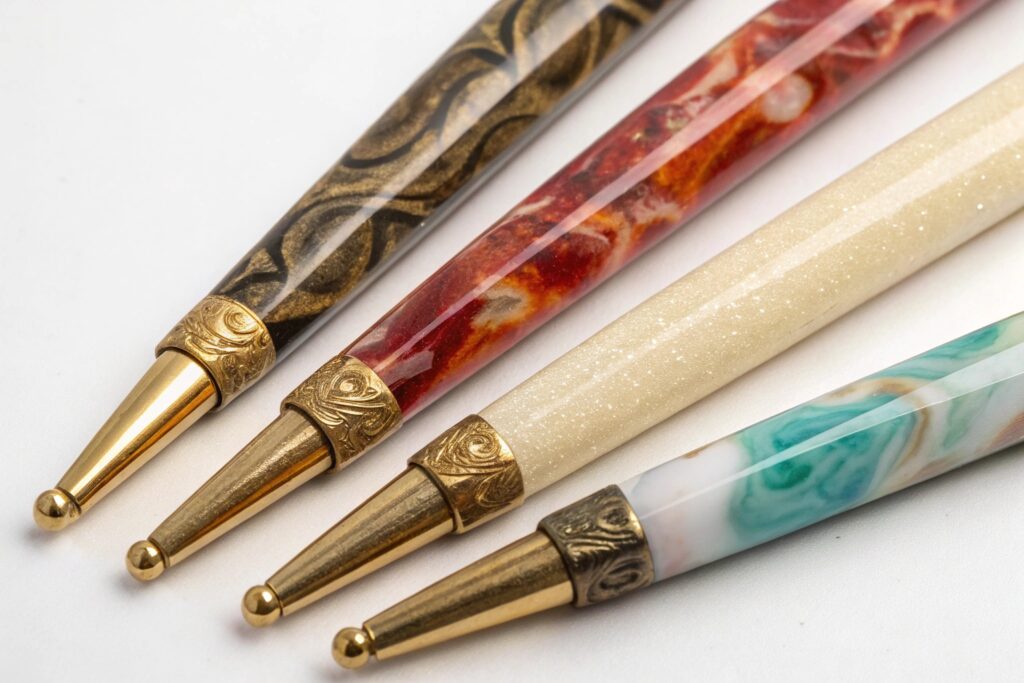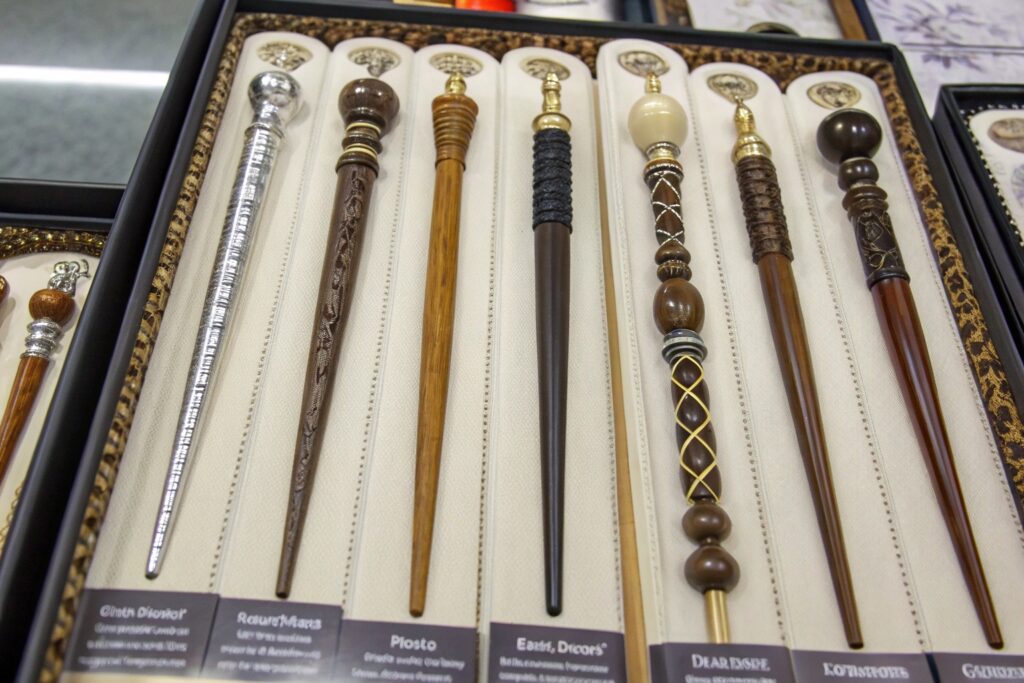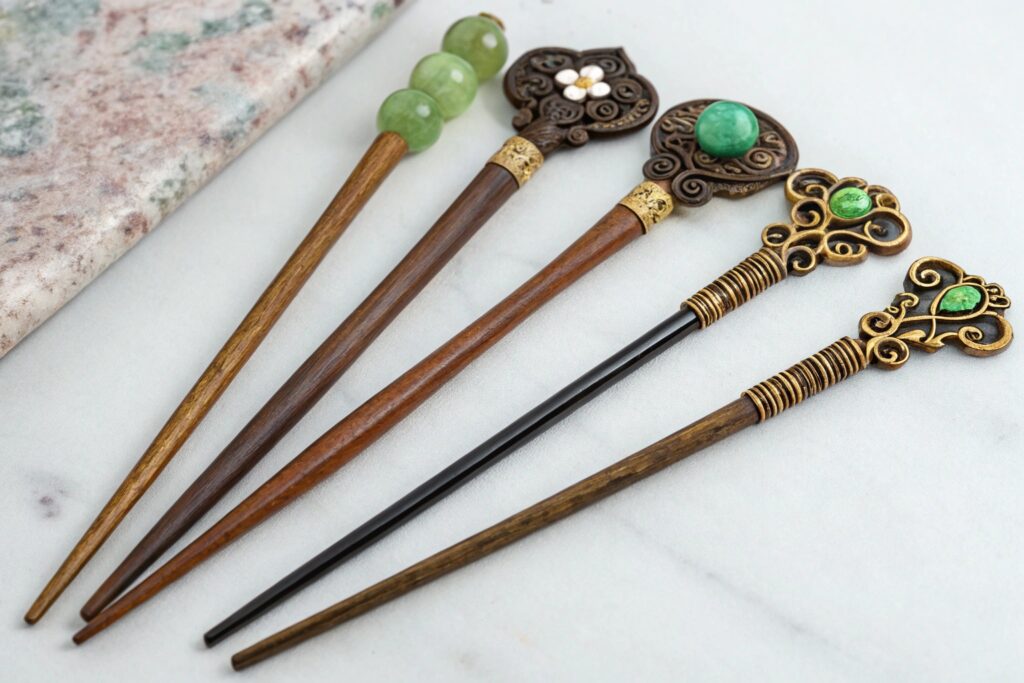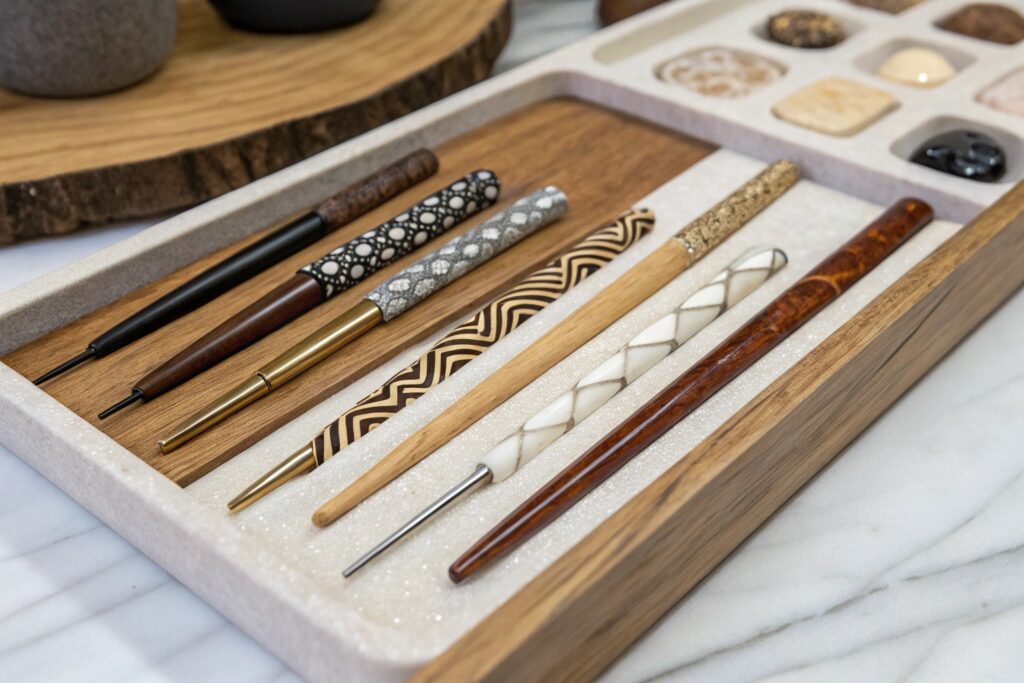Hair sticks—once a traditional hairstyling tool—are now making a comeback in both luxury fashion and sustainable beauty markets. Material innovation is leading the way, with brands seeking new finishes, textures, and eco-friendly options.
In 2025, the leading trends in hair stick materials include sustainable woods, recycled resins, ceramic blends, biodegradable plastics, and matte-coated metals—each responding to the demand for environmental consciousness, aesthetic appeal, and cultural inspiration.
In this guide, I’ll share what’s driving these material trends, how they affect sourcing and branding, and what to consider if you’re sourcing hair sticks for fashion retail or e-commerce.
Why Are Eco-Friendly Hair Stick Materials Gaining Popularity?
Consumers want green beauty—accessories included
Sustainability is driving product innovation, especially in materials. Hair stick buyers are now looking beyond wood and metal to find compostable, recycled, and upcycled materials.

HairAcc offers eco-material options such as:
- Bamboo and birch wood (lightweight, renewable)
- Wheat straw polymer blends (compostable)
- Recycled resin with embedded glitter or flowers
- Biodegradable PLA plastics (sourced from corn starch)
These align with trends in clean beauty and minimalist fashion, ideal for boutiques with green branding.
Check out more sustainable product guides at Sustainable Jungle and GreenQueen.
What Aesthetic Materials Are Dominating Premium Hair Stick Designs?
Artisanal finishes and new textures elevate hair sticks to jewelry status
High-end brands are using new materials to differentiate, adding weight, gloss, or texture to make hair sticks a centerpiece of style.

Popular 2025 materials include:
| Material | Features | Use Case |
|---|---|---|
| Acetate | Glossy, multicolor, flexible | Boutique fashion |
| Ceramic | Artistic, painted, durable | Gift and premium segments |
| Brushed brass | Matte gold tone, heavier feel | Luxury and bridal markets |
| Marbled resin | Color swirl effect | Mid-range retail stores |
HairAcc provides:
- Hand-poured resin molds with logo engraving
- Metal-accented tips for weight and elegance
- Custom color matching for acetate or pearl-like finishes
You can explore similar textures at MaterialDistrict and Designboom.
Are Custom Blends and Textures Emerging for Mid-Market Retail?
Yes—blending materials allows creativity without high costs
To appeal to trend-savvy yet cost-conscious shoppers, brands are opting for dual-material blends that offer unique visual and tactile appeal at scale.

Emerging combinations include:
- Wood-resin hybrids (organic + colorful contrast)
- Metal tips on plastic bodies (weight + polish)
- Frosted matte finishes on ABS or recycled polymers
- Soft-touch coatings for grip and aesthetics
HairAcc supports hybrid customization with small MOQ tooling and multiple packaging options for online or shelf-based retail.
More insights on surface finishes can be found at Core77 and Materials Today.
How Do Regional Trends Affect Material Preferences in 2025?
Different markets, different materials
Cultural trends, climate, and market positioning shape what materials are preferred across global regions.

Global Preferences Snapshot
| Region | Preferred Materials | Notes |
|---|---|---|
| Asia | Wood, bone, shell, jade | Traditional, minimalist, wedding |
| Europe | Resin, acetate, metal | Artistic, gender-neutral, boutique |
| US & Canada | Recycled plastic, soft-touch ABS | Eco-aware, fast fashion, casual |
| Middle East | Gold-tone, lacquered wood | Ornamental, luxury gifting |
HairAcc adapts by offering:
- Geo-targeted catalogs
- Language-specific packaging
- Trend analysis by territory
- Samples tailored to regional preferences
For cultural fashion studies, see Fashion Theory Journal and Ethical Fashion Forum.
Conclusion
Material innovation is shaping the next generation of hair sticks. In 2025, sustainability meets sophistication—with a range of options from compostable wheat-straw blends to glossy resin and ceramic elegance.
At HairAcc, we work closely with clients to explore and prototype trending materials, whether for artisan collections, fast-fashion platforms, or eco-focused retailers.
Stay ahead of the curve by choosing hair stick materials that align with your brand’s values, market demand, and aesthetic direction.









